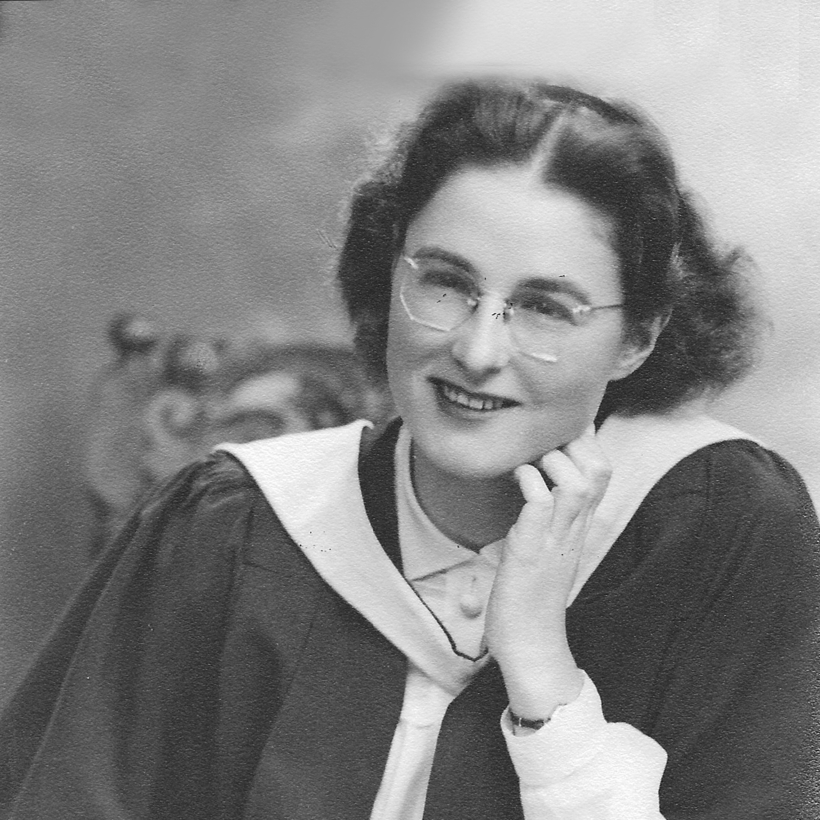Ailsa Maxwell was studying for a degree in economics at the University of Edinburgh when a mysterious summons arrived from the Foreign Office: would she come in for an interview?
It was summer 1943 and although her Foreign Office contact could not divulge what the job was, or its location, he was able to tell the 20-year-old that it was important war work.
Despite the scant information she accepted and within two years found herself witness to a momentous historical event: the German surrender.
Hut 6 at Bletchley Park
Her appointment had been to the top-secret codebreaking establishment Bletchley Park, known as Station X, where she worked in the machine room of Hut 6 helping to crack the German Enigma code. The encryption changed daily, resulting in a complicated operation to decipher it and the messages transmitted by the enemy.
Alan Turing had developed the Bombe machine to decrypt Engima’s secret settings and Maxwell’s role was to compile Bombe menus from “cribs” — clues to guess what the settings of the machine could be.
In a 2013 interview for the Bletchley Park oral history project, she explained: “Our main job was, when a stop from the Bombes satisfied the way it had been set up, we then set this up on the Enigma machines to see whether it was right. We didn’t know German, but it was obvious whether what came out was nonsense or made sense. I enjoyed it when we made up programmes.”
Maxwell worked alongside Asa (later Lord) Briggs, who became a renowned social historian, and both were on overnight duty when the unconditional surrender message from Hitler’s successor, Grand Admiral Dönitz, was received early on May 7, 1945.
Uncoded Text
It was in clear, uncoded text and Briggs would later comment: “As more clear messages came through, the secrets of the war were already beginning to fade into history.”
Maxwell kept her silence about that historic day and her covert codebreaking work for many decades, remaining modest about her contribution once the operation was revealed in the 1970s.

The daughter of a railway manager, Douglas Macdonald, and Grace, a teacher, Ailsa Maxwell was born in Gourock, Renfrewshire, but moved south when her father went to work at Euston. Educated in Mill Hill, London, she returned to Scotland to complete her schooling at Dumfries Academy.
Her mother died when she was 14 and the teenager spent time with her aunts in the Dumfriesshire village of Moniaive where she learnt to drive, warranting a lecture from the local policeman who caught her under age behind the wheel. She never did sit a driving test and, slipping through the net, continued motoring into her late eighties.
Maxwell kept her silence about that historic day and her covert codebreaking work for many decades, remaining modest about her contribution once the operation was revealed.
After that Foreign Office interview she had two weeks’ training for Bletchley, where she was subsequently told they were breaking codes, but never knew the result of their efforts. She regularly visited her father in London and often returned to see family in Scotland. “They just accepted that they would not be told what I was doing for a job. Everyone had secrets,” she said. “When the story came out in 1974 it didn’t have much impact on me as it seemed to come out gradually. It took a bit longer for me to talk about it.”
Her work there ended soon after VE Day and she went back to Scotland to help with the general election and to finish her degree. She met her future husband, Stuart Maxwell, on a students’ reading weekend and they married in 1953 when she was working as a research assistant at the Department of Health for Scotland.
Her husband, with whom she had two sons — Ian, the national manager of the charity Shared Parenting Scotland, and Sandy, who works for the John Muir Trust — was deputy keeper at the National Museum of Antiquities of Scotland, in Edinburgh.
An Economics-History Researcher
As the boys grew up she worked as a researcher in the University of Edinburgh’s economic history department on a ten-year project leading to the publication of Michael Flinn’s Scottish Population History from the 17th Century to the 1930s.
Later she continued to work in the capital’s Register House and, with her husband, conducted research into the history of Scottish silversmiths and goldsmiths. She volunteered for many years with the Samaritans, helping to establish the service in Edinburgh and taking on overnight telephone shifts.
In 2014 Maxwell gave her seal of approval to the film The Imitation Game, deeming it a reasonably accurate portrayal of the extraordinary chapter of history that she experienced at Bletchley Park.
Ailsa Maxwell, Bletchley Park codebreaker, was born on December 16, 1922. She died on February 10, 2020, aged 97

